Debt can be a heavy burden, causing stress, anxiety, and financial instability. If you find yourself drowning in debt, it’s essential to take proactive steps to alleviate your financial strain. While there are many debt relief options available, one approach that empowers individuals to regain control of their finances is self-help debt relief. In this guide, we will explore what self-help debt relief entails and provide you with actionable steps to begin your journey towards financial freedom.
Understanding Self-Help Debt Relief
 Self-help debt relief, as the name suggests, is a method of managing and reducing your debt on your own, without the direct involvement of debt consolidation companies or credit counseling services. This approach can be an excellent choice if you have the discipline and determination to tackle your debt head-on. Here are some key elements of self-help debt relief:
Self-help debt relief, as the name suggests, is a method of managing and reducing your debt on your own, without the direct involvement of debt consolidation companies or credit counseling services. This approach can be an excellent choice if you have the discipline and determination to tackle your debt head-on. Here are some key elements of self-help debt relief:
- Budgeting: The foundation of self-help debt relief is creating and sticking to a budget. A well-structured budget helps you track your income, expenses, and debt payments. It allows you to identify areas where you can cut costs and allocate more money towards debt repayment.
- Debt Prioritization: Not all debts are created equal. Prioritize your debts by interest rate, focusing on high-interest debts first. This strategy, known as the debt snowball or debt avalanche method, can help you save money on interest and pay off your debts faster.
- Negotiation: You can reach out to your creditors to negotiate better terms for your debt. This may include lower interest rates, extended payment terms, or even settling for a lump sum payment that is less than the total owed.
- Financial Education: Educate yourself about personal finance and debt management. There are numerous online resources, books, and courses available to help you gain a better understanding of how to manage your finances effectively.
- Savings: Building an emergency fund is essential to avoid falling further into debt when unexpected expenses arise. Having a financial cushion can prevent you from relying on credit cards or loans to cover emergencies.
- Side Income: Consider finding ways to increase your income, such as taking on a part-time job or freelancing. The extra income can be directed towards debt repayment, accelerating your progress.
Actionable Steps for Self-Help Debt Relief
Now that you understand the principles of self-help debt relief, let’s delve into some actionable steps to get you started:
- Gather Your Financial Information: Begin by compiling a list of all your debts, including balances, interest rates, and minimum monthly payments. This will give you a clear picture of your financial situation.
- Create a Budget: Develop a comprehensive budget that outlines your monthly income and expenses. Be honest and thorough in categorizing your spending habits.
- Set Clear Goals: Define your debt repayment goals. Determine how much you can realistically allocate towards debt repayment each month and establish a timeline for becoming debt-free.
- Prioritize Your Debts: Use the debt snowball or debt avalanche method to prioritize your debts. Choose the method that aligns with your financial goals and personality.
- Negotiate with Creditors: Reach out to your creditors and explore opportunities to negotiate better terms for your debts. Be prepared to explain your financial situation and make a compelling case for why they should cooperate.
- Cut Unnecessary Expenses: Analyze your budget and identify areas where you can cut back on spending. Redirect the money saved towards debt repayment.
- Build an Emergency Fund: Start saving for emergencies to avoid accumulating more debt when unexpected expenses arise. Aim for at least three to six months’ worth of living expenses in your emergency fund.
- Increase Your Income: Explore opportunities to boost your income, whether through a side job, freelancing, or monetizing a hobby.
- Track Your Progress: Regularly monitor your progress and make adjustments to your plan as needed. Celebrate small victories along the way to stay motivated.
- Seek Support: Consider joining online forums or support groups where you can connect with others facing similar financial challenges. Sharing experiences and advice can be incredibly motivating.
Conclusion

About the Author
Eric has amassed extensive experience in the financial and credit counseling sector, dedicating numerous years to this industry. Presently, he serves as a certified credit counselor at Debt Reduction Services, leveraging his expertise to assist individuals in managing their debts effectively. Throughout his career, Eric has consistently exhibited his commitment to empowering consumers with the knowledge and tools necessary to navigate their financial challenges.











